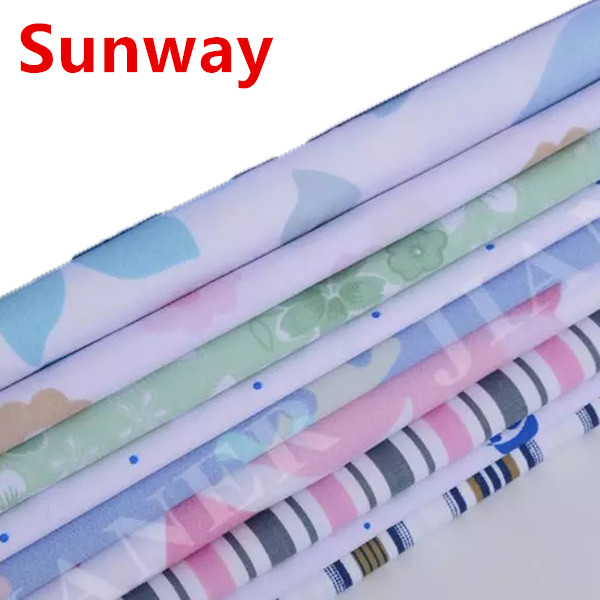Research on Multiplicative Congruence and Pseudo-random Frequency Modulation Screening Method(II)
3 Random screening experiments and results
The experimental process flow of multiplicative congruent pseudo-random screening is shown in Figure 2. Raster image processor (abbreviated as RIP) is the core of a color desktop publishing system. Its main function is to interpret the image, graphics, and text information in the page file described by the page description language, convert it into dot matrix information, and control the printer or The imagesetter records the dot matrix information on paper or film. RIP is divided into hardware RIP and software RIP, which are generally amplitude-modulated and networked. The original image is scanned and acquired by a scanner. The image processing software (photoshop) first performs color correction, gradation adjustment, color separation, and the like, and then uses a congruence congruence pseudo-random method to perform FM screening. The screened image is composed of PageMaker to form the required layout. After proper processing, it is sent to the RIP and the imagesetter's output is controlled. The purpose of using the existing RIP to complete the FM screening can be achieved. The results of the study confirm that this is feasible, which opens the way for FM screening using hardware and software of off-the-shelf DTP systems. The novaRIP (a kind of software RIP) is used in the study. The advantage is that it can predict the screening results and discover that the problem can be repeatedly modified.

Figure 2 Multiplicative Congruence Pseudo-random Screening Experiment Process Diagram
For the sake of simplicity, first try to randomize grayscale images. Figure 3 shows a sample output on a laser printer with an output resolution of 600 dpi. In color printing, large areas of the same color, the same level of spot color are difficult to copy. We tried this at the Air Force Xi'an Printing Factory and achieved satisfactory experimental results.

Figure 3 Grayscale image random grid output
Literature [4] pointed out that when random screening occurs, texture will appear when the gray value is high. We believe that the main reason for this phenomenon is that when there are a large number of pixels of the same gray value in the image, due to the same pseudo-random number sequence distribution, resulting in the same mutual distribution rules, thus forming a texture, as shown in Figure 4a Show. In this regard, as long as measures are taken to enable pixels of the same grayscale value to be used in the same random number sequence to use different sequence start points, or to use different random number sequences, the distribution rules between them can be different, thereby avoiding textures. The phenomenon is shown in Figure 4b.

4 Conclusion
Using random pseudo-random functions to perform random screening on the image, use the amplitude-modulated and screened RIP to interpret and convert the graphic character information, control and drive the laser imagesetter, and achieve the FM output of the image in an ordinary DTP system, and play out the CMY color registration. Spot color proofs open the way for FM screening using off-the-shelf DTP system hardware and software.
Experiments show that using the multiplicative congruential method to generate a pseudo-random number sequence is convenient and fast, and it has been used successfully for FM screening. For stochastic screening, appropriate parameters X0, A, and M must be selected to ensure that the random number sequence with a value less than or equal to the dot matrix number and the number of dots equal to the dot matrix number is generated in the shortest period, thereby accelerating the screening process. process.
When there is a large area with the same pixel gray value in the image, when the screening is performed, the pixels of the same gray value can use different sequence starting points in the same random number sequence or use different random number sequences. Make the rules of distribution between them different, so as to avoid the occurrence of texture phenomenon. The future research topic is to use different pseudo-random functions for FM screening, compare their advantages and disadvantages, and discuss and establish an evaluation system for the uniformity and independence of the distribution of random screening points; change from pre-group screening to group edition. Post-screening, researching the platemaking, printing and printing suitability of FM screening, especially the law of dot enlargement and its compensation methods, explored the commercialization and practical approach of FM screening software.
Authors / Xu Jinlin, Lu Xinmin, Zhou Shisheng, Cao Congjun
"Journal of Xi'an University of Technology"
High quality Laminated Non Woven Fabric is made of Environmental protection material 100%, we have got the certificates of SGS, ROHS and ISO14000 etc , our products have sold to Europe, America, Japan, Korea, Middle East, southeast Asia and other countries for many years , for the bag`s shape , size , thickness, color which we can customize according to your requirements , we can provide the best quality and competitive price for you .


Laminated Non Woven Fabric
Laminated Non Woven Fabric,Laminated Non Woven,Laminated Fabric,Custom Laminated Non Woven Fabric
Dongguan Sunway Packaging Material Co., Ltd , http://www.sunwaypackaging.com